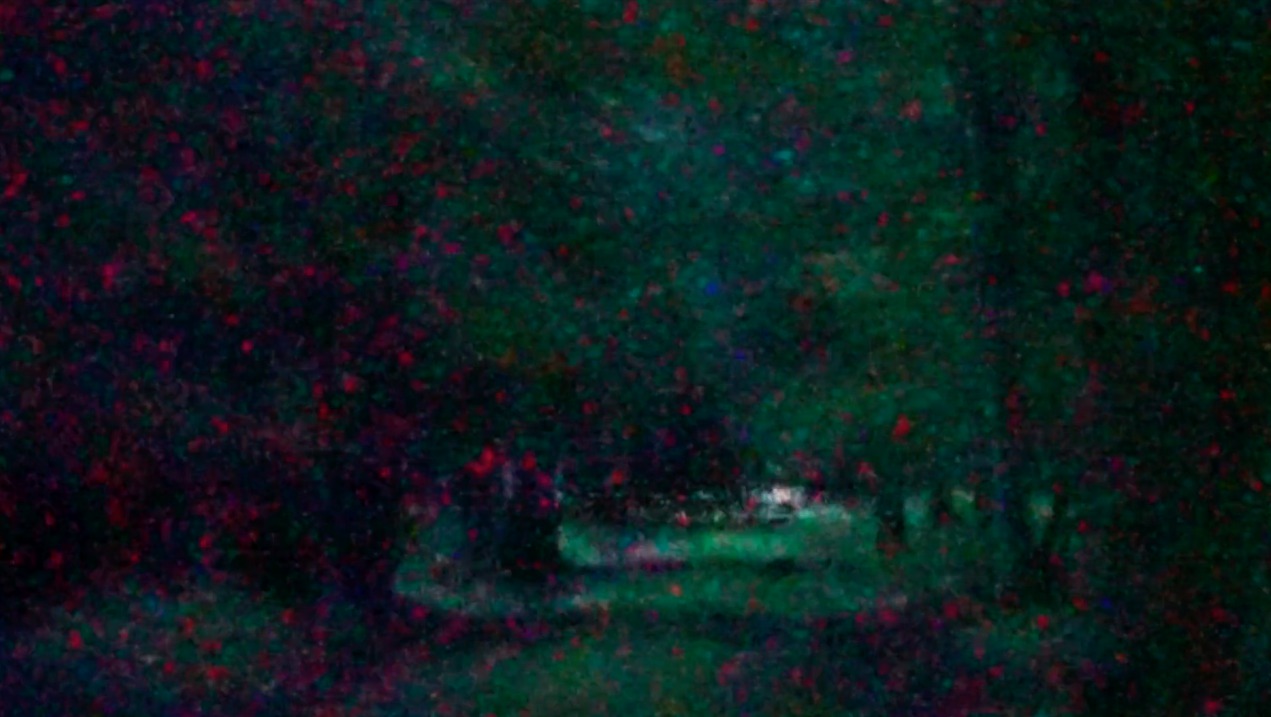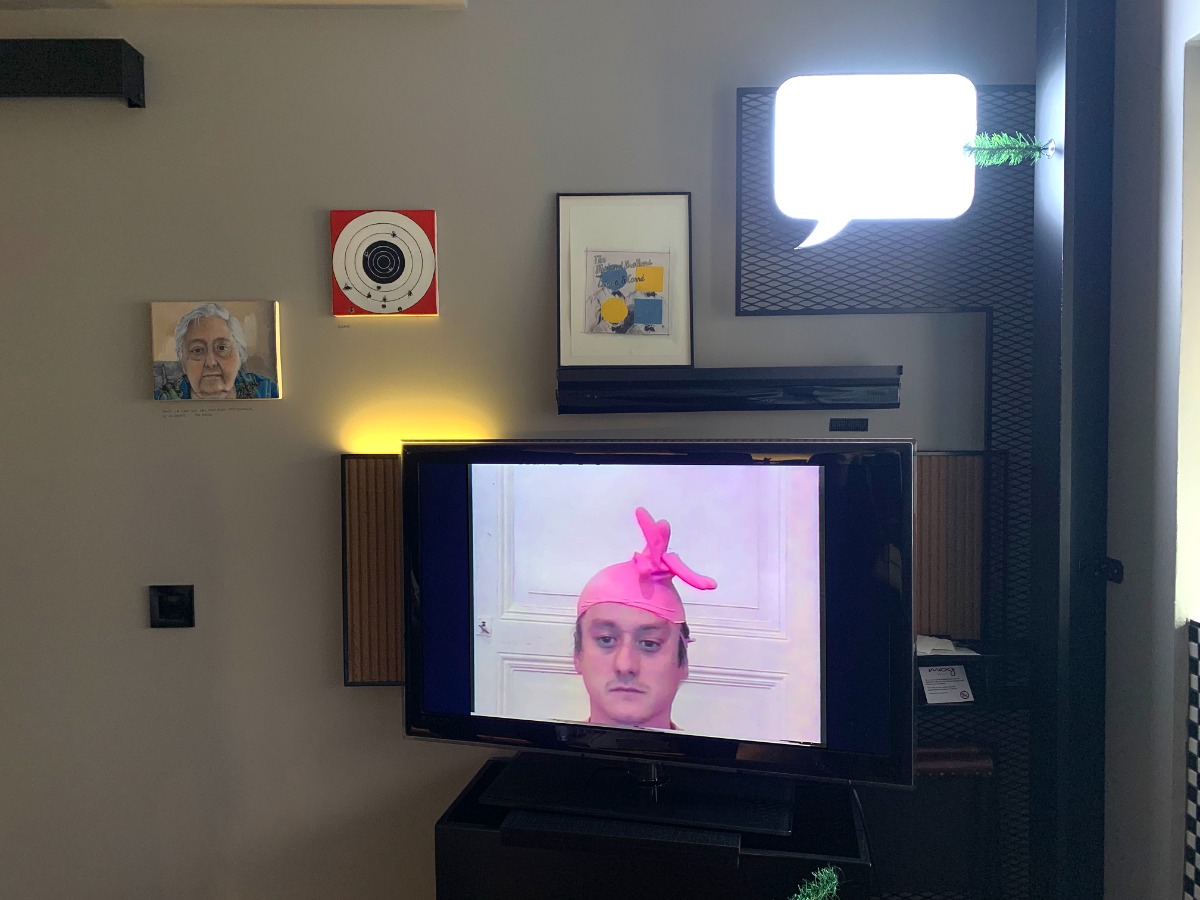
Around Video in Lille
A look back at the Around Video Art Fair
Around Video, a three-day fair dedicated to video art and one of several events listed in the ambitious programme of the Lille3000 triennial, took place in the French city of Lille from September 30 to October 2.
Conveniently located in the north of France – just an hour’s drive from cultural meccas such as Paris, London, Brussels and Amsterdam – the event attracted a large crowd of video art lovers. This was just the second year for Around Video and, like last year, the fair was held at the Moxy Lille City Hotel, with 36 galleries and 11 specially invited artists exhibiting their work in the hotel’s rooms. The fair’s participants mostly represented the Francophone art zone of France and Belgium, but also included galleries and artists from Spain, the Netherlands, the UK, Italy and Estonia.
Moxy Lille City Hotel. Photo: Odrija Kalve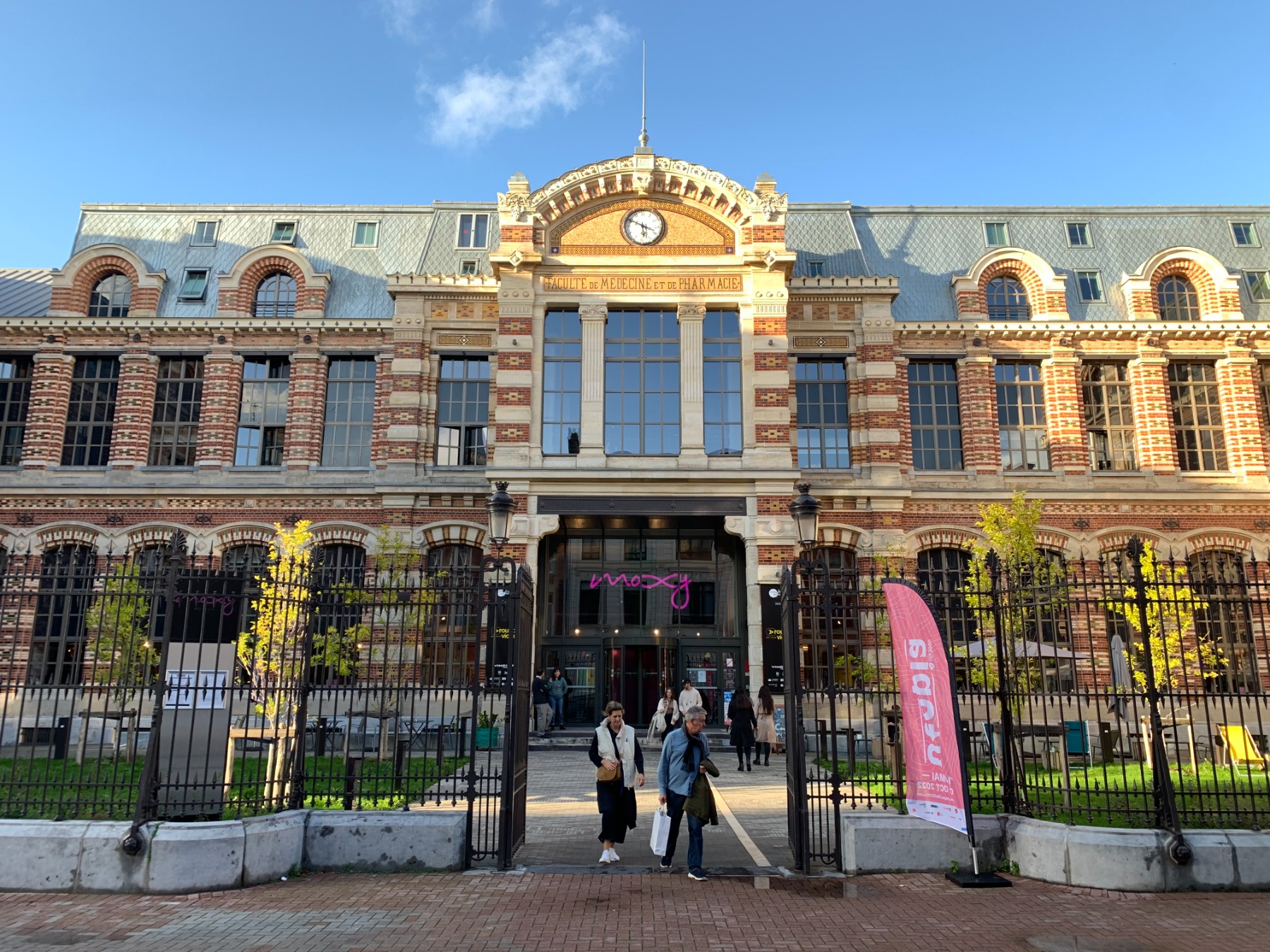
How it all began
Europe is rich in art fairs both large and small, and France is no exception. What was it that led to another event of this kind to be created in the middle of Europe during the height of the Covid-19 pandemic?
Opening of the Around Video Art Fair at the Moxy Lille City Hotel. Photo: Odrija Kalve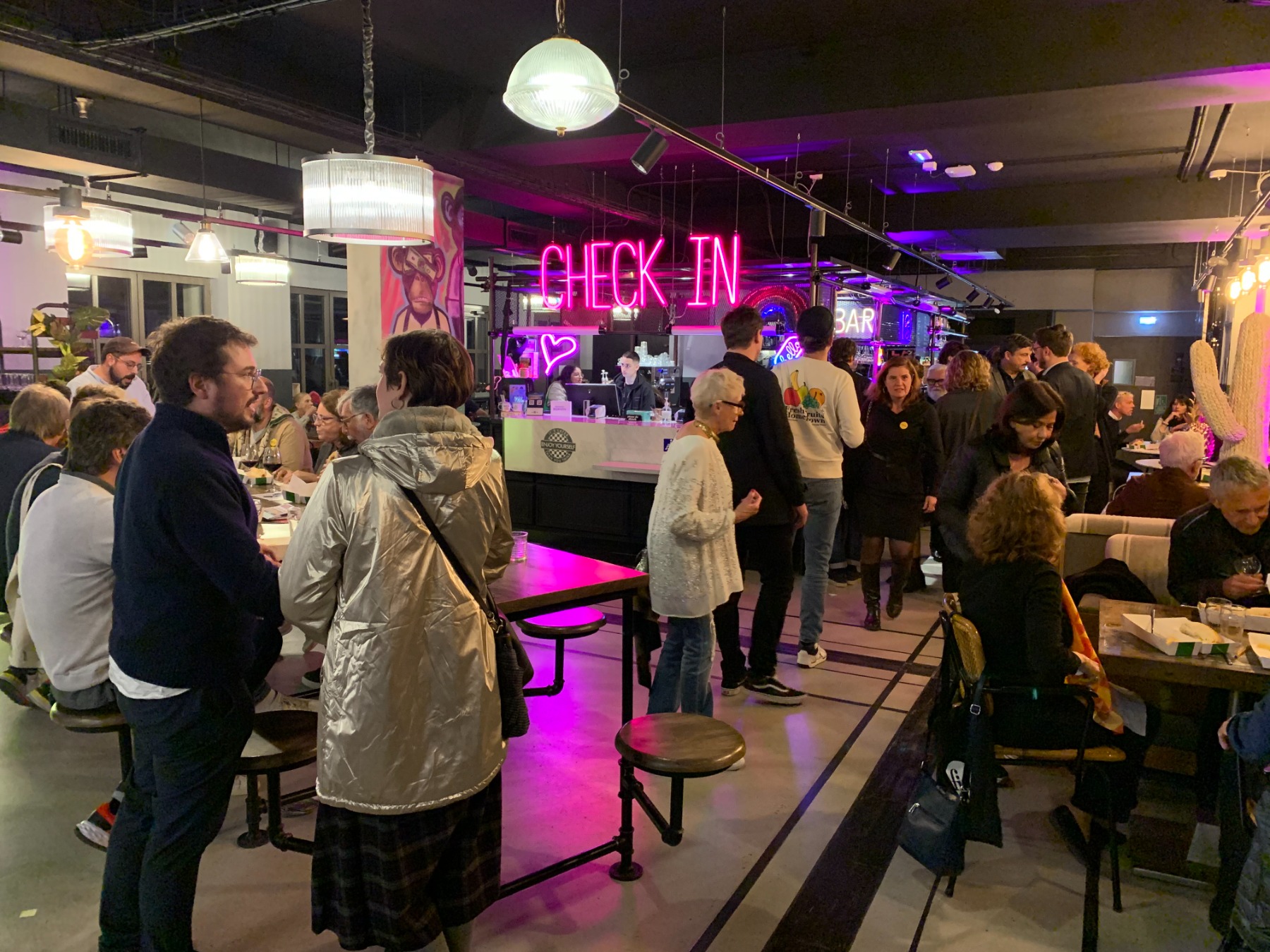
Apart from video art festivals and a few art fairs where video art has been allotted its own section, the moving image market in southwestern Europe has so far had only one event dedicated to it – the Loop fair in Barcelona (which, incidentally, is also held in a hotel). When asked about where the idea for the fair came from, Around Video’s founder, Renato Casciani, a collector and physician by profession, sees it as a successful challenge that he set for himself as well as a meeting place for video art lovers and new enthusiasts alike. Haily Grenet, the fair’s director, adds: “To share – that’s the main idea of the fair. Renato wanted to do something related to video because it is close to Le Fresnoy [Le Fresnoy – Studio national des arts contemporain, an institute of higher education specialising in audiovisual and digital art – Ed.], which is one of the best schools in the world. Usually we choose artists who live in the region or have studied at Le Fresnoy.”
Renato Casciani, art collector and the founder of the fair at the Around Video Prize award ceremony at Le Fresnoy. Photo: Odrija Kalve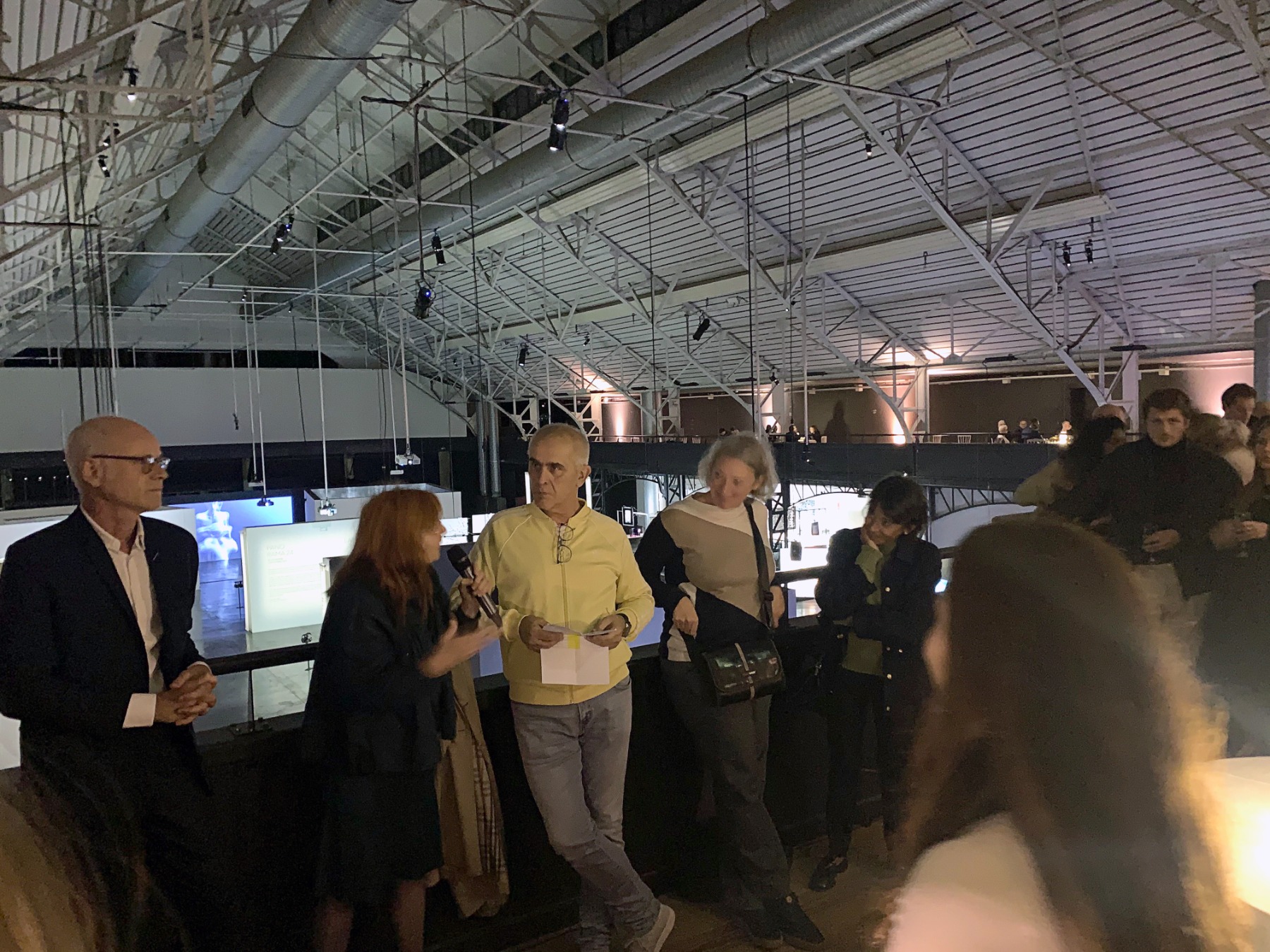
In commenting on the fair’s location, Grenet explains that by using individual hotel rooms, there is no need for additional structures to be built; plus, the sounds made by the artworks do not interfere with works in other rooms. “In addition, it is also cosier and more intimate to watch videos in the comfort of a bed, and it is more conducive to communication between the collector and the artist or the gallerist.” Casciani adds: “The hotel format is a change from the way screens are usually consumed on a daily basis – here we stay for more than two seconds and we really enjoy what we’re seeing.” Casciani admits that the video art market in France (and the world) is complicated, but is nevertheless gradually developing: “The market is quite low and private collectors are not very keen on buying video art. However, there are institutions that are now acquiring quite a lot of video artworks. What will stay and remain in the artistic canon is that which is being held in the institutions. Everyone now has a smart phone, so it is possible to access or create your own video, animation or moving image quite easily. The new generation will be doing it more and more, and that is where and how video art will grow.”
SHIMABUKU at Air de Paris (Paris). Photo: Odrija Kalve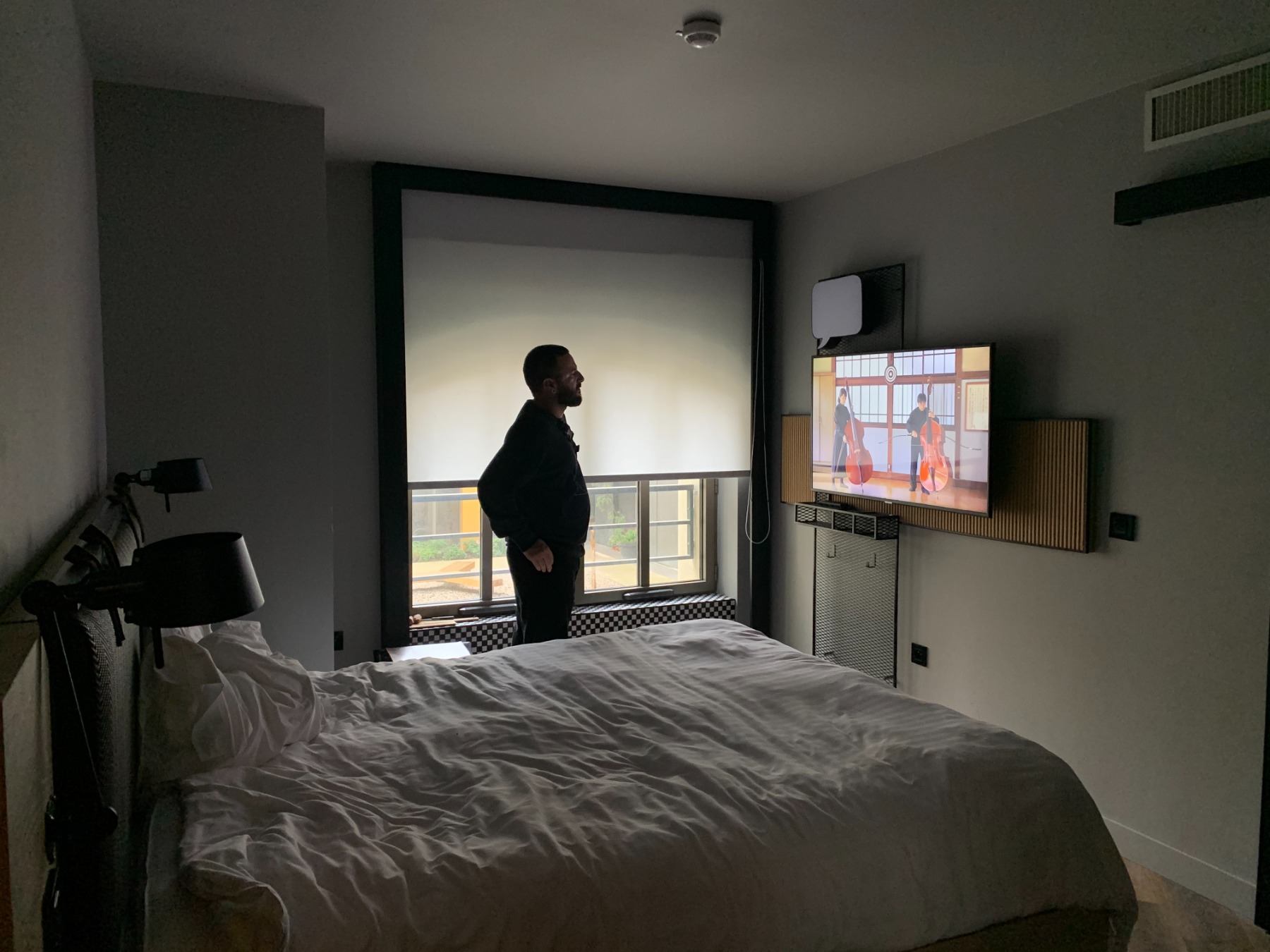
Indeed, the overall atmosphere of the fair was cosy and welcoming, but I didn’t really feel like lying down on the comfortable beds made up with crisp white linens (most likely because I knew that the gallerists and artists would be spending the night in them). Most of the galleries had darkened the hotel rooms like an exhibition hall and placed the focus on the video; only a few made full use of the space, integrating other works or filling the space with installation elements from the video.
In speaking with the gallerists, most of them agreed that the hotel format was very suitable for exhibiting video works. “Usually it is very difficult to show films in the context of a fair, but this kind of a place – with rooms that can be darkened – is really good. Here visitors can really concentrate – they watch the film from beginning to end,” surmised Valeria Cetraro (Galerie Valeria Cetraro, Paris).
Baltic representation
As already mentioned, this year’s Around Video featured mainly western European galleries, art collectors, institutions and artists, yet artists from all three Baltic States were represented as well. Estonia was represented by Kogo Gallery (Tartu) with works by Latvian artist Līga Spunde, as well as by Estonian artist Kristina Norman, who was one of the authors of the Estonian pavilion at this year’s Venice Biennale. Video works by Lithuanian artist Emilija Škarnulytė were on display in the room for The Film Gallery (Paris).
Liina Raus, the founder of Kogo Gallery, revealed that the gallery’s participation at Around Video Art Fair, as well as Kristina Norman’s exposition, was curated by Julia Cistiakova, a Lithuanian curator who lives and works between Paris and Zurich. Cistiakova was in charge of presenting the Baltic region and eastern Europe at the fair.
Līga Spunde, There’s No Harm In Any Blessings, 2021
Kogo Gallery’s exhibition stood out among other galleries in terms of the layout of their space – artist Līga Spunde and gallery manager Liina Raus had made sure that the viewer was transported into the world of Bubble Boy before they even began viewing the featured video, There’s No Harm In Any Blessings (2020), e.g. a towel hanging in the bathroom, socks by the bed, rats “asleep” on the neatly arranged beds.
Līga Spunde at Kogo Gallery (Tartu). Photo: Līga Spunde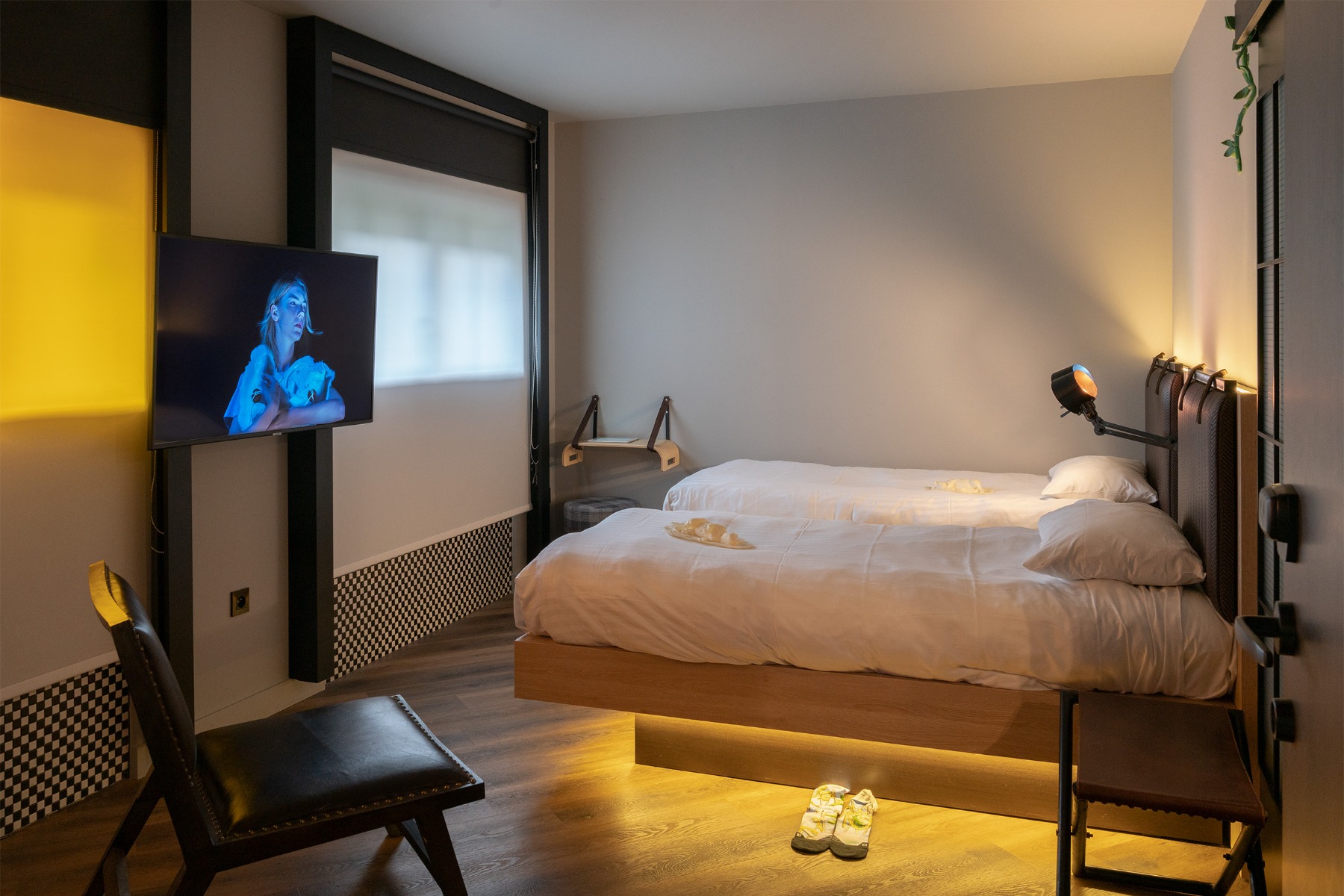
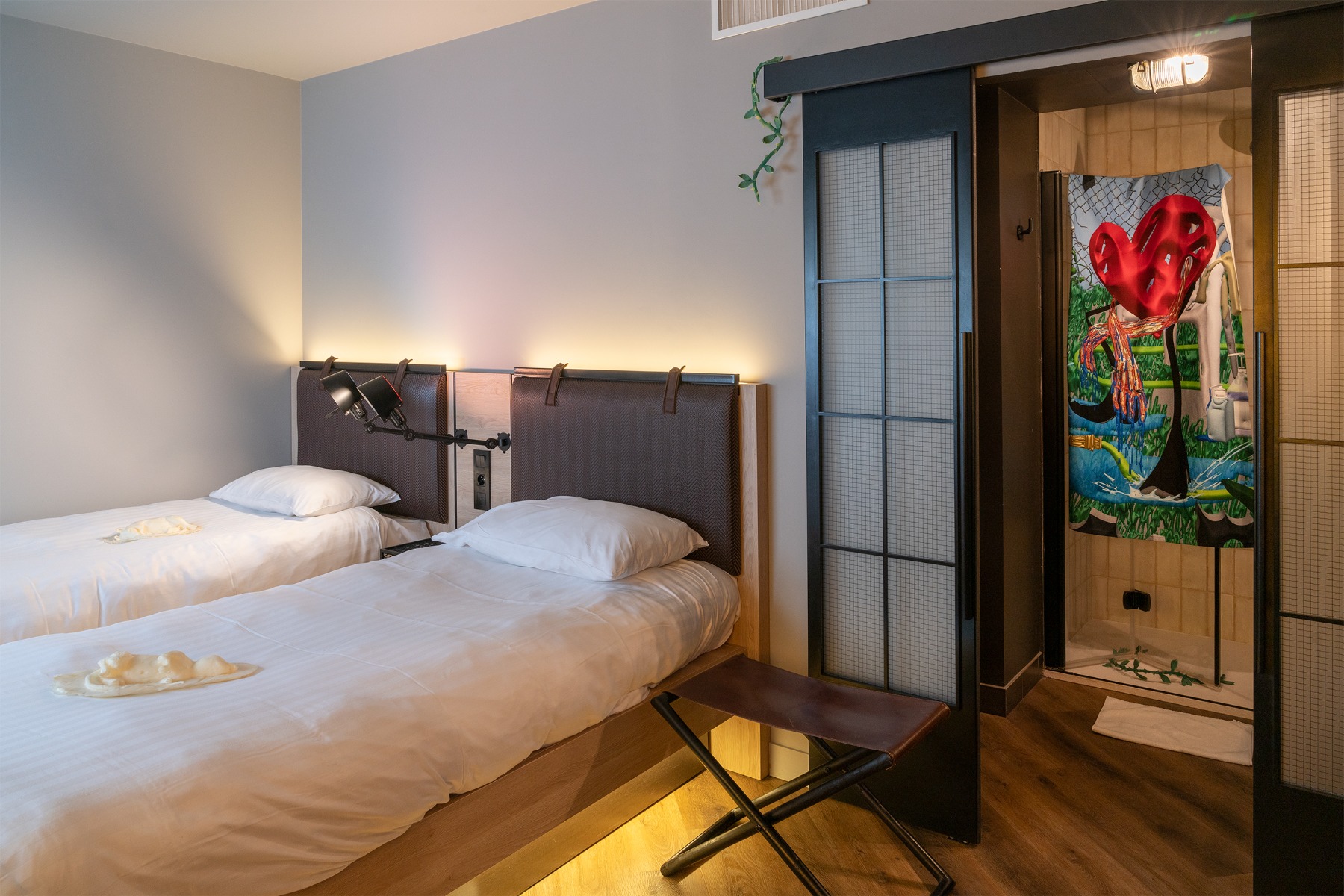
Spunde’s work is a poetic collage of facts and interpretations that uses motifs from the author’s life as well as the story of David Vetter (The Bubble Boy), who suffered from severe immunodeficiency and had to spend his life in isolation. The artist talks about relationships, the sense of security, overprotection, and faith in the supernatural as a defense strategy.
Screenshot from the video Rip-Off by Kristina Norman, 2021
Estonian artist and documentary filmmaker Kristina Norman was a specially invited artist – there was a special section at the fair devoted to artists who are not represented by galleries. Two of her videos for the 59th Venice Biennale were on view at the fair – Rip-Off and Shelter. The latter was a part of the Around Video exhibition De l’Autopsie à l’Utopie (From Autopsy to Utopia) at the contemporary art space Espace 3cinq; curated by Renato Casciani, the exhibition featured works from his collection as well as loaned artworks from artists and galleries. As the collector explained himself: “We went to the Venice Biennale and just fell in love with Kristina’s art”.
The film Rip-Off, as well as the whole biennial project, explores the space between the privileged upper class and labourers. From one side, the project deals with colonialism through the lens of botany; from the other side, it addresses the environmental problems that resulted from colonialism, thereby showing that the colonial heritage has not disappeared and still has an impact today. Inequality between the Global North and the Global South persists.
Emilija Škarnulytė, Circular Time. For Alexandra Kasuba. 2021, HD, 18’37” Installation view at The National Gallery of Art, Vilnus, 2021
The Film Gallery (Paris) presented two works by Lithuanian artist Emilija Škarnulytė – Circular Time. For Alexandra Kasuba (2021) and the 16 mm film Polymers (2013).
Working in Berlin and Tromsø, Škarnulytė draws inspiration from ecologically unique regions such as the Arctic Circle, the deserts of the American West and the Middle East, nuclear power stations in Europe, Cold War bases, ancient civilisations lost to the seas, and aphotic zones. These geographical locations and dimensional layers serve as the context for her speculative “archaeological” films that reflect on the current world from an imagined future perspective.
The AROUND VIDEO and NOW/HERE prizes
Around Video Prize award ceremony at Le Fresnoy. Photo: Odrija Kalve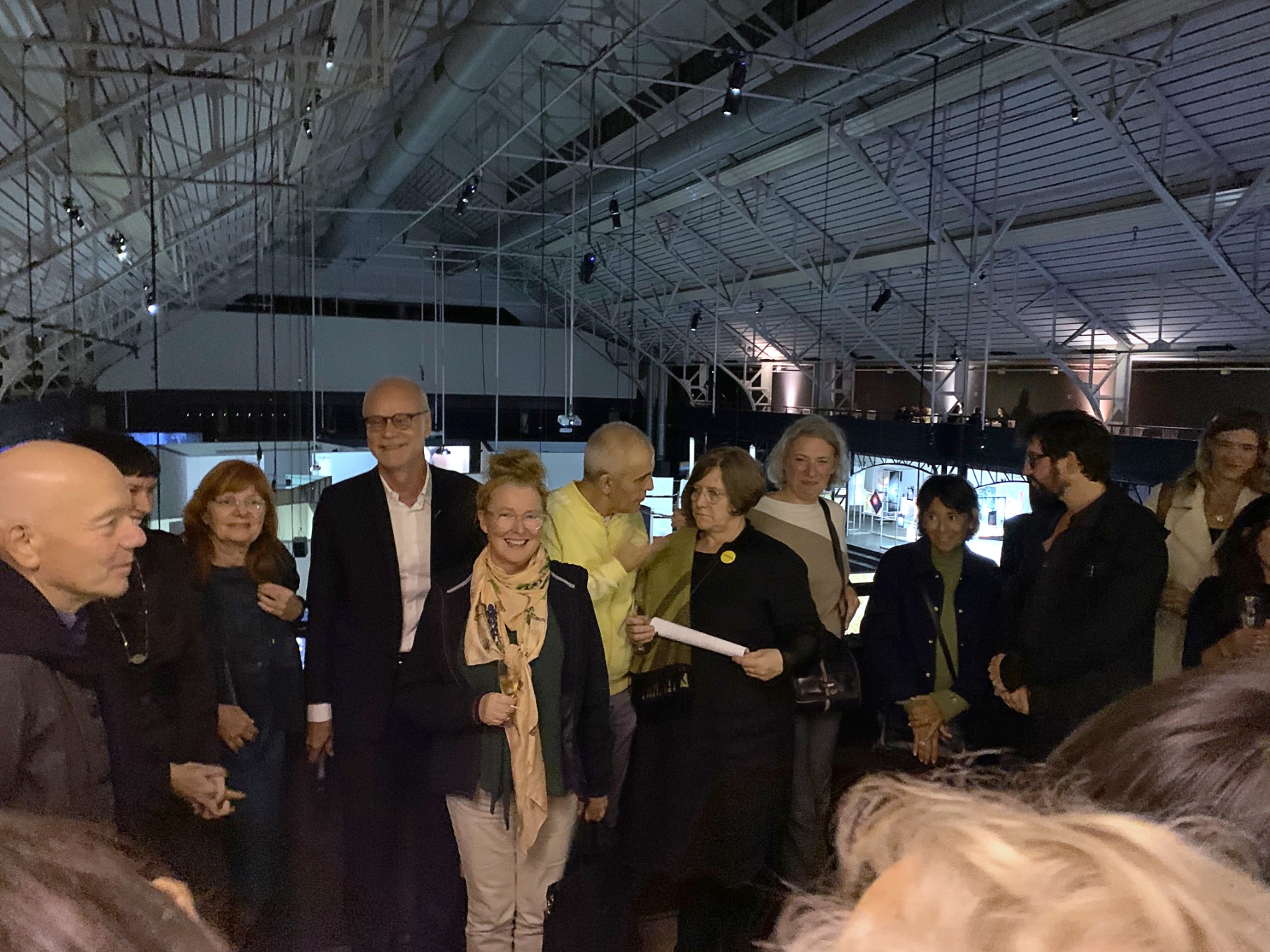
The performance of the galleries presenting at Around Video was recognised with prizes: the Around Video Jury Prize for Best Video, and the Now/Here Prize from collectors Renato and Catherine Casciani – for works that the couple plan on adding to their collection. The awards ceremony took place at the prestigious Le Fresnoy school for audiovisual arts. The distribution of the prizes was determined by a jury chaired by Caroline Bourgeois (Fondation Pinault), who also initially selected the galleries for the fair.
Still from the Pauline Curnier Jardin & Feel Good Cooperative video Fireflies, 2021, 7:19 min. Courtesy of the artist and Ellen de Bruijne projects, Amsterdam
1st Prize (2000 euros) for Best Video was awarded to Fireflies by Pauline Curnier Jardin, who was represented by the gallery Ellen de Bruijne projects (Amsterdam). The visually thrilling artwork of this Berlin-and-Rome-based French artist, who works across installation, performance, film and drawing, is a collaborative meditation on liminal spaces and desire. A 16 mm film video in HD, it gives the viewer a glimpse of the outskirts of Rome, where erratic flashes of light from car headlights illuminate trans sex workers as if they were fireflies.
Trailer of Un homme sans image… by Enrique Ramirez, 2020, 9 min. Courtesy the artist and Michel Rein, Paris/Brussels
2nd Prize (1500 euros) went to Enrique Ramirez’s video Un homme sans image… (A Man Without an Image…), presented by Galerie Michel Rein (Paris/Brussels).
Ramirez, a Chilean artist who graduated from Le Fresnoy, is known for his films, installations and photographs that are full of poetry and question both history and the contemporary world. A recurring element in his creations is the sea. In a very poetic way, the video Un homme sans image… depicts a man clinging to his boat in the midst of a raging sea, looking for a new horizon yet far from any certainty; it encourages the viewer to shift their gaze off-centre and to rethink our way of being in the world.
Still from Laura Gozlan’s film Foulplay III, 2022, Film 4K, colour, stéréo, 5’ 30”, 3E + 1EA. Courtesy of the artist and Galerie Valeria Cetraro
3rd Prize (waived participation fee for the gallery in the next edition of the Around Video art fair) was awarded to Galerie Valeria Cetraro for the presentation of Laura Gozlan’s film Foulplay III.
The video is a part of a trilogy in which, in the continuity of previous works, the artist plays the character of “The Mum” – citing Barbara Creed, a professor of film studies specialising in feminist and horror cinema: an incarnation of the “Feminine-Monstrous”, e.g. the archaic mother, vampire and witch. In the trilogy, The Mum practices “sex magic”.
Joining the Renato and Catherine Casciani collection in the near future will be three video works awarded the Now/Here Prize; among them is the video Libre maintenant (Free Now) by Pierre Libaert, represented by the Archiraar gallery (Brussels).
Still from Pierre Libaert's video Libre maintenant, 2021. Archiraar Gallery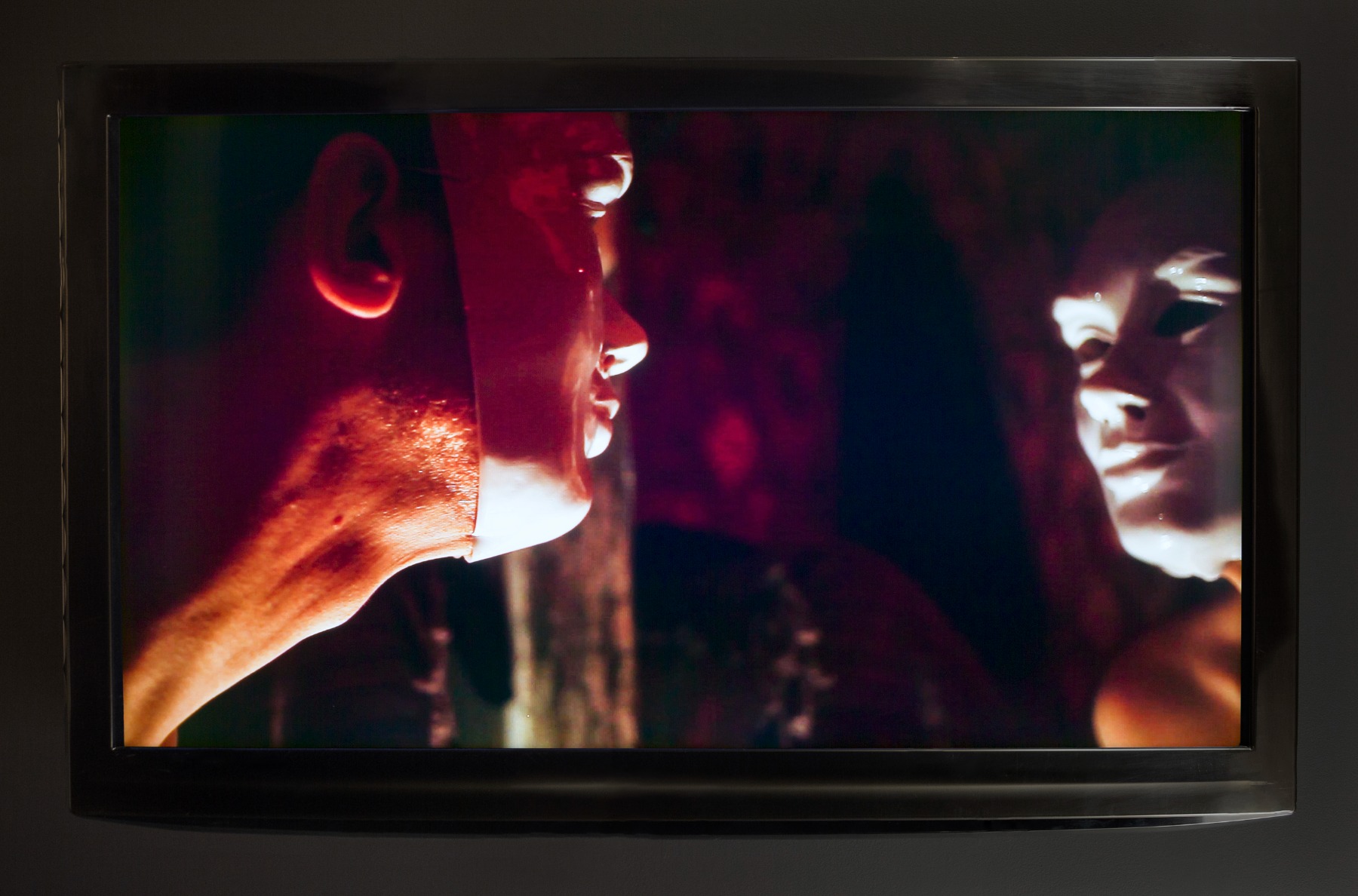
Belgian photographer Pierre Liebaert developed this work through the investigation of gender issues and their resonance with public norms. Confessions of men who have replied to the artist’s ad to be photographed naked – with only a mask on their face – reveal their double-life situations to the artist almost as if they were lying on a psychologist’s couch. Pierre Liebaert’s ability to show both the immense feeling of loneliness and the models’ relief to expose their real selves in front of the camera is utterly fascinating.
Trailer of TouchMETell video by melanie bonajo, 2019
Another work that received the Now/Here Prize and will soon be part of the Casciani collection is the video TouchMETell by melanie bonajo, presented by AKINCI Gallery (Amsterdam). melanie bonajo also represented the Netherlands at the 59th Venice Biennale this year.
In the video TouchMETell, the artist and a group of children ages 6–8 investigate how they experience their own body and physical contact with others. What is sex? Does love have anything to do with sex? Can you feel emotional pain in your body? bonajo asks these and other questions to the children while they push, hug, paint or stroke each other.
Still from the video performance Hurle car celui qui se meurt se tait (Scream Because the One Who is Dying is Silent) by Sarah Trouche, Svalbard, Arctic, - 25°C, 2022, 6’25”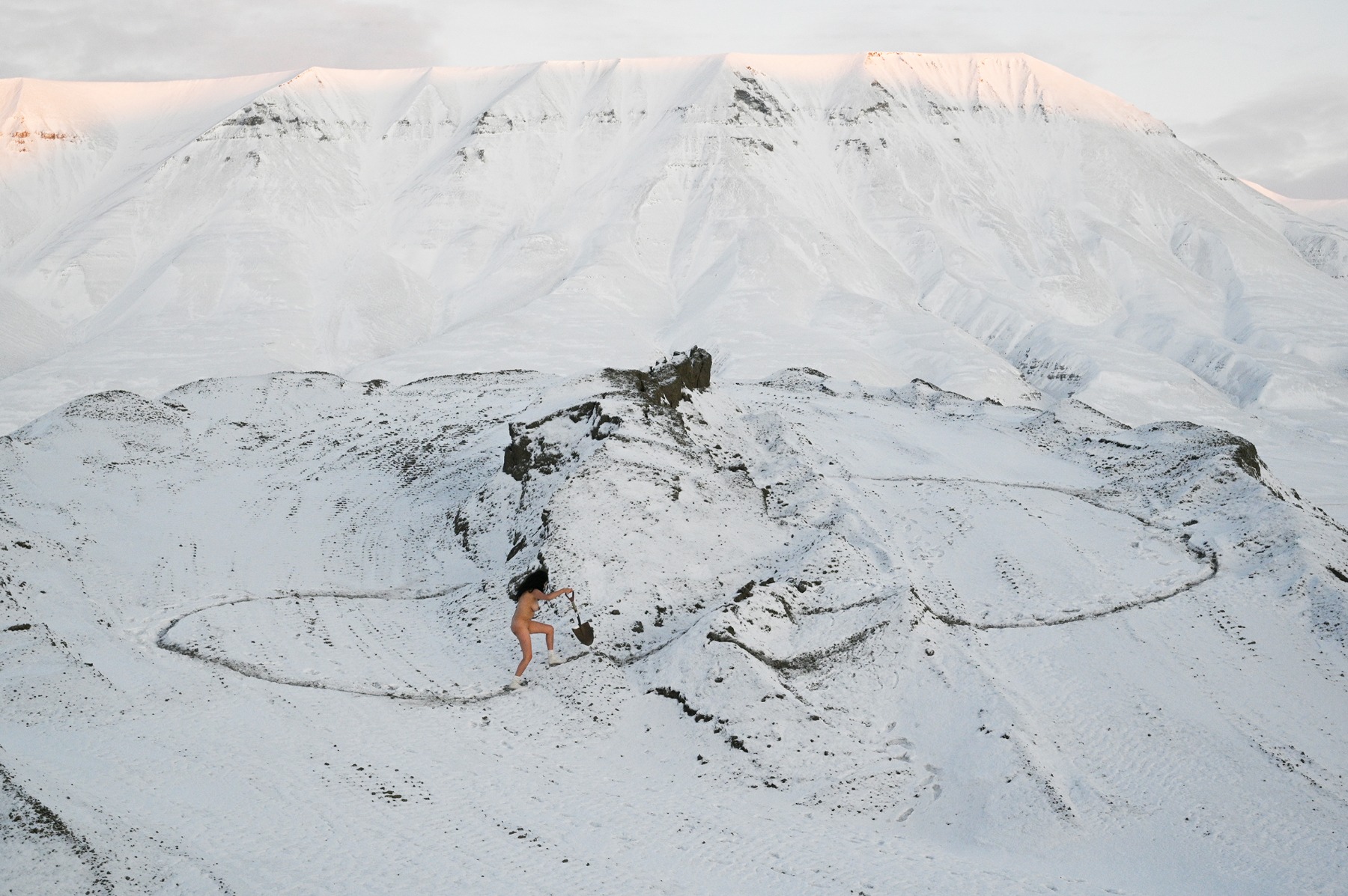
The third video soon to be a part of the Casciani collection is Sarah Trouche’s video performance in Svalbard. Completely naked, the artist struggles with the harshness of an environment in which she is only passing through. She tries to recreate the movement of the Moon – its lunar orbit. This ellipse is the imprint of the impossibility to act in the face of such rapid transformations of the landscape; it symbolises the acceleration of a change we can only witness.
Still from the video J’ai cru voir by Eugénie Touzé, 2021, video HD, stereo, 7 min
Centre Wallonie-Bruxelles (an art institution that disseminates and promotes artists based in the Wallonia-Brussels Federation) also chose their favourite at the fair – Galerie Sono (Paris), with the painterly video J’ai cru voir by Eugénie Touzé in which with the sensitive eye of the camera, the artist follows the activities going on in a forest thicket. It becomes darker and darker, visibility fades, and the result is a crackling image full of coloured flecks in which white silhouettes suddenly appear.
Jacques Lizène, Attempt to Train a Camera, 1971; Attempt to Escape the Surveillance of a Camera, 1971; digitalised Sony portapack, B/W, sound, 2’11”. Production Yellow Now, Liège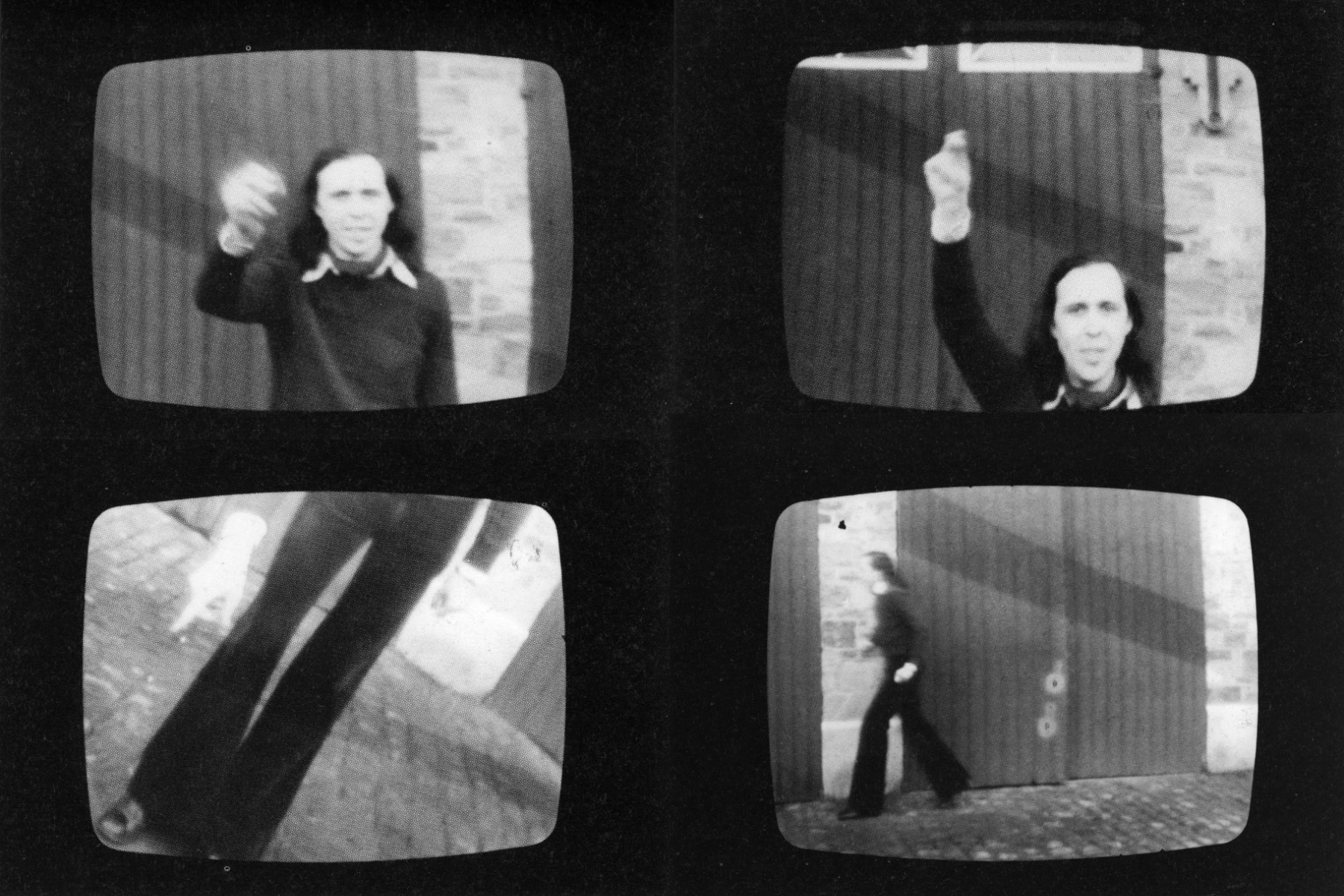
Special mention was given to Nadja Vilenne Gallery (Liège) with its representation of Belgian artist Jacques Lizène’s (1946–2021) oeuvre. Lizène was a video art pioneer in Europe, and his video Tentative de dressage d’une caméra (Attempt to Train a Camera, 1971), like his other works, shows the artist’s opposition to order, authority, and everything that is harmonious and regulated.
The art fair as a festival
Overall, the range of themes in the video works presented at the fair was very broad – from ecological issues and political current affairs in different parts of the world (the Russia-Ukraine war was not touched upon, however) to artists’ self-reflections and satire of societal dogmas. It seems that the jury chose the galleries and works according to the principle that anyone with an interest in video art could find something inspirational to them. Walking from room to room in the hotel, one could really lose oneself in the world of video art without risk of repetition or boredom. Also, the size of the Around Video fair was just enough that one could visit all the gallery rooms and watch all the videos from start to finish in three days.
Dor Guez at Dvir Gallery (Brussels, Paris, Tel Aviv). Photo: Odrija Kalve
Most of the gallerists I asked for comment were very complimentary about both the quality of the fair and the work of the jury, saying that the most important benefit of the fair was the opportunity to make new contacts. Valeria Cetraro, a Parisian gallerist, believes: “It is very representative in context of the galleries in France in terms of video art as well as in general. This is a very good selection. Regarding the visitors – usually institutions are the ones interested in this kind of work, but what I like here is that the films are also seen by collectors.”
“The fair has been a very good moment for us, with a lot of new contacts. We really enjoyed the special and delightful ambiance created by the fair’s team and by the Cascianis. Indeed, this event focuses on the collectors and they had a lot to see and to visit,” Alexis Rastel, the director of Archiraar Gallery (Brussels) admitted. Gallerist Nadja Vilenne (Nadja Vilenne Gallery, Liège) agreed: “It is important for us to have good collectors and public collections, and this fair is an opportunity for us to contact these people. In comparison with the big fairs, here they have time to speak with galleries. That’s why I like small fairs – because the communication is more personal”.
The Arcade (London/Brussels) gallery’s director, Christian Mooney, believes that a weekend dedicated to video is necessary, however, in the context of a fair, he raises the question of “how do we disseminate works, how do we share them?” He thinks that “the hotel format is still difficult because you need people to watch the video. Of course, you do not expect everybody to see everything, but I wonder if it would be a good idea (for future fairs) to share a small teaser before the fair? Or should we do it as a screening, and then there is a moment for conversation?”
It should be noted that in the rooms of the French and Belgian galleries, the video works were oriented towards French-speaking viewers – they were in French with English subtitles, while in the foreign galleries there was no French translation, which probably also determined how long a local viewer spent in front of the screen.
Marijke De Roover, Do You Believe in Life After Love? 2022, HD Video, 23’44” Courtesy of the Arcade
Future plans
In speaking about the future of Around Video and any expansion options, Haily Grenet emphasises that firstly, “it cannot be a big fair because video art is very niche. Secondly, we cannot have more galleries because 40 videos in three days is a lot – any more cannot be ‘digested’. Also, we want to keep it cosy and warm – that is part of the charm. If we lose that, we will also lose what Renato is doing – his motto, or his way of seeing life and the art world.”
“Any growth of the fair would have to concern more exhibitions at the same time, including video shows. And also – convincing politicians to give us more subsidies,” adds Renato Casaciani, the founder of the fair.
Currently, the fair’s organisers are not coddling any huge international plans, either. “Lille is very specific. It is very convenient – it is close to Paris and Brussels, and close to London and Amsterdam as well,” says Grenet. “So, first of all, we want to be connected to this part of Europe; we’ll see how we expand from there.”
Title image: Thierry Lagalla at Espace à Vendre (Nice). Photo: Odrija Kalve
